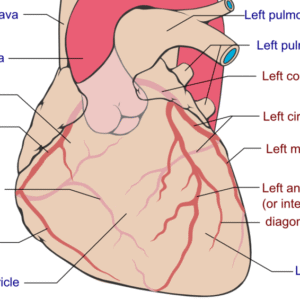Cardiology > Ventricular Puncture
Ventricular Puncture
Background
Ventricular puncture is a rare but life-threatening traumatic or iatrogenic penetration of the myocardium, specifically the left or right ventricle, resulting in acute hemorrhage, cardiac tamponade, or cardiac arrest. It may occur secondary to penetrating chest trauma, incorrect needle placement during central line insertion, pacemaker lead perforation, or surgical interventions such as pericardiocentesis. This injury disrupts myocardial integrity and may rapidly lead to hemodynamic compromise requiring emergent diagnosis and intervention.
Classification/Types
By Mechanism:
- Penetrating Trauma
Stab wounds, gunshot injuries, shrapnel-related trauma.
- Penetrating Trauma
- Iatrogenic Injury
- Central venous catheter misplacement
- Right ventricular perforation by pacemaker/ICD leads
- Surgical instrument or needle injury (e.g., during pericardiocentesis, cardiac surgery)
- Device-Related Mechanical Trauma
Over-insertion or migration of devices such as biopsy needles or ablation catheters.
- Device-Related Mechanical Trauma
By Chamber Involved:
- Right Ventricular Puncture (more common due to anterior location)
- Left Ventricular Puncture (less common, more catastrophic due to higher pressure)
Pathophysiology
Ventricular puncture disrupts myocardial integrity, leading to rapid leakage of blood into the pericardial sac. This accumulation elevates intrapericardial pressure, impairing ventricular filling, and may culminate in cardiac tamponade. In high-pressure left-sided perforations, massive hemopericardium or hemothorax can develop. Delayed perforations may cause pseudoaneurysm formation or chronic pericardial effusion. In iatrogenic cases, over-penetration by devices or instruments is the key initiating event.
Epidemiology
- Pacemaker lead perforation incidence: ~0.1–0.8%
- Central venous catheter-induced cardiac perforation: 0.01–1.5%
- Penetrating cardiac trauma accounts for up to 10% of all traumatic cardiac arrests.
- Right ventricle is the most commonly injured chamber due to its anterior position.
Etiology
I) Indications for Procedures with Risk
- Central venous catheter placement
- Pacemaker/ICD implantation
- Endomyocardial biopsy
- Cardiac surgery, especially pericardial procedures
- Emergency thoracostomy or pericardiocentesis
II) Risk Factors for Ventricular Puncture
- Operator inexperience
- Thin or dilated ventricles (e.g., in cachexia, chronic steroid use)
- Excessive stylet force in pacemaker leads
- Deep insertion of central lines or introducers
- Right ventricular apex placement of pacemaker leads
Clinical Presentation
I) Symptoms
- Sudden onset chest pain or pleuritic pain
- Dyspnea or orthopnea
- Dizziness, syncope
- Hypotension or signs of shock
II) Signs
- Tachycardia, muffled heart sounds, distended neck veins (Beck’s triad)
- Pulsus paradoxus
- Pericardial rub or silence
- Bradycardia or pulseless electrical activity (PEA) in severe tamponade
- Hypoxia, hemoptysis if hemothorax is present
Differential Diagnosis (DDx)
- Cardiac tamponade (non-traumatic)
- Myocardial rupture post-MI
- Tension pneumothorax
- Aortic dissection
- Pulmonary embolism
- Pericarditis or myocarditis
- Constrictive pericarditis
Diagnostic Tests
Baseline/Monitoring
- Echocardiography (TTE/TEE): First-line for detecting pericardial effusion, tamponade, or direct visualization of device perforation.
- ECG: Low voltage, electrical alternans, ST changes
- Chest X-ray: Abnormal lead position, hemothorax, or mediastinal widening
- CT Chest/Cardiac CT: Precise localization of the perforation, device migration
- Cardiac Enzymes: May be elevated if myocardial injury
- CVP Monitoring: High central venous pressure in tamponade
Device-Specific Surveillance
- Pacemaker interrogation: Abnormal sensing or lead impedance
- Chest imaging post-central line insertion
Treatment
I) Acute Management
- Emergency Pericardiocentesis: For tamponade relief
- Volume Resuscitation and Vasopressors: To maintain perfusion
- Immediate Cessation of Offending Procedure or Device Manipulation
- Emergency Sternotomy or Thoracotomy: Especially in penetrating trauma with ongoing hemorrhage
- Cardiopulmonary Resuscitation (CPR): For arrest scenarios
- Temporary Pacing: If bradyarrhythmia or asystole occurs due to injury
- Temporary Pacing: If bradyarrhythmia or asystole occurs due to injury
II) Long-Term/Definitive Therapy
- Surgical Repair of Myocardial Injury: Suture repair or patch closure
- Lead Revision or Extraction: In cases of pacemaker lead perforation
- Removal of Catheters: Performed under imaging guidance in stable patients
- Pericardial Window Creation: For recurrent effusion or tamponade prevention
- Cardiac Rehabilitation: In patients post-operatively or after major trauma
Medications
Purpose | Examples | Notes |
Vasopressors | Norepinephrine, Dopamine | Maintain perfusion in tamponade/shock |
Analgesics/Sedation | Fentanyl, Midazolam | Pain control and procedural sedation |
Anticoagulant Reversal | Protamine (heparin), Vitamin K (warfarin) | If bleeding risk is high |
Device Therapy (Related Considerations)
- Pacemaker Lead Repositioning or Extraction: In cases of perforation
- ICD Implantation: For post-traumatic ventricular arrhythmias
- Pericardial Drainage Catheter: Temporary in tamponade management
- Temporary Transvenous Pacing: In bradycardic or stunned myocardium
Patient Education, Screening, Vaccines
- Inform patients about signs of lead malfunction: syncope, palpitations
- Educate on signs of tamponade after procedures
- Emphasize safe practices in chest trauma and monitoring post-procedures
- Encourage early medical contact for unexplained dyspnea or hypotension
- Routine vaccine schedules to prevent infectious causes of pericardial effusion
Consults/Referrals
- Cardiothoracic Surgery: For repair or exploration
- Electrophysiology/Cardiology: Device management
- Trauma Surgery: In penetrating injuries
- Radiology: Image-guided drainage or lead evaluation
- Intensive Care: For hemodynamic monitoring
Follow-Up
Short-Term
- Daily echocardiograms post-perforation repair
- ECG monitoring for arrhythmias
- Close hemodynamic monitoring in ICU
- Close hemodynamic monitoring in ICU
Long-Term
- Periodic echo for recurrence of effusion or chamber dysfunction
- Device checks (if applicable)
- Evaluation for myocardial scarring or post-traumatic aneurysms
- Rehabilitation and psychosocial support in trauma survivors
Prognosis
- Prompt recognition and intervention are critical—mortality can be high in delayed diagnoses.
- Surgical repair yields good outcomes if performed early.
- Device-related perforations generally have favorable prognosis when managed electively.
- Post-traumatic injuries have variable prognosis depending on the extent of bleeding, delay in care, and associated injuries.
Stay on top of medicine. Get connected. Crush the boards.
HMD is a beacon of medical education, committed to forging a global network of physicians, medical students, and allied healthcare professionals.

